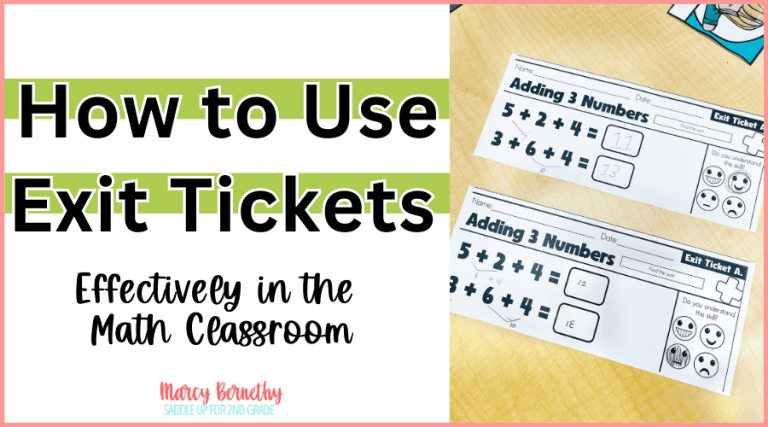

Join me for a FREE, Guided Math workshop to discover how to easily incorporate Guided Math into your current schedule!
It’s no secret that I am a HUGE believer in guided math for any grade level. After teaching in this format in my own classroom for years, I began helping other math teachers inside of my Managing Math Stations course do the same. I’ll never go back to whole group teaching again. No matter how much time you have for your math block, you CAN fit all of the guided math components into your math block schedule. The key is managing your time and breaking it into small chunks to fit it all into your elementary classrooms.
I’m so excited to bring you part 2 of my guided math blog series where I’ll be showing you an example guided math schedule that you can set up with your guided math block schedule, no matter how much time you have!
Ready to learn more? The other posts in this guided math blog series cover:
Part 1: Guided Math Break Down
Part 3: Establishing Guided Math Procedures
Part 4: Must Have Materials For Math Stations
Part 5: How To Run Differentiated Math Stations
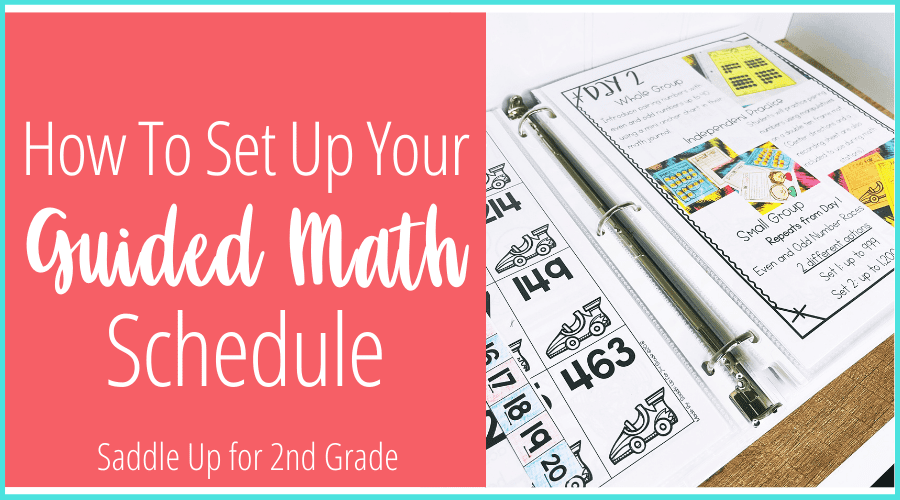
Guided math is a structured way of teaching using a mix of whole group and small group instruction. It consists of the following 5 components:
Before we dive into all of the components, let’s first talk about your math block schedule. First, you need to make sure that you have your math block is set up to run smoothly for this style of teaching and an easy way of transitioning.
One of my best tips for you to take away from this for student success is to BE FLEXIBLE!
There are going to be days where your math stations do not run smoothly. There will be days when you don’t get to everything planned or to all the groups you have planned to see. You’ll have a fire drill or a parent will show up unexpectedly with cupcakes.
Just remember, that’s ok! Give yourself and your students grace and keep moving forward. You can do this!
One of the most frequently asked questions I get on my Instagram and in my Saddle Up For 2nd Grade Teachers Facebook Group is how to set up your math block schedule to work for guided math. I will share a few examples of guided math schedules that will give you an idea of how to do this with different time frames below.
Keep in mind, if you have a different time frame for your math block schedule, take what I say and adapt it to fit your needs and schedule.
Secondly, when planning your instruction, keep it simple. Don’t try to do too much in one math block. The key to guided math is keeping your lessons short and simple.
Your core teaching will take place at the small group table where you can differentiate. I truly believe that magic and deep understanding happens at the small group table!
If you’re looking for lessons that perfectly fit a guided math block schedule, check out my Guided Math Bundle for example guided math lessons on each 2nd grade concept!
To start your math block, you’ll begin with a 5 minute warm-up. Then you’ll move into your 20 minute whole group lesson.
Your whole group lesson can be broken down in different ways. You can do a quick 10 minute mini-lesson followed by 10 minutes of independent practice. You can also choose to do a 15 minute mini-lesson followed by 5 minutes of independent practice or vice versa.
Always feel free to change it up depending on the day, your students’ needs, and the concept being taught.
Follow this up with 30 minutes of small group instruction. I recommend aiming to see 2 groups per day, so having (2) 15 minute rotations.
So often, teachers think they have to see each small group every single day, which is not the case! If you feel comfortable and you have stellar organization and classroom management, you can do (3) 10 minute rotations if it works well for you and your students.
Your math block will wrap up with a 5 minute reflection. This might be an exit ticket, a quick quiz, or a simple conversations as a class about the concept and what they learned.
You may not do a reflection every day. On the days you omit the reflection, you can add 5 minutes onto your math block somewhere else.
Maybe you want to incorporate an extra 5 minutes to your mini-lesson or small groups. You can even sneak in a 5 minute brain break to recharge your students’ brains halfway through your math block.
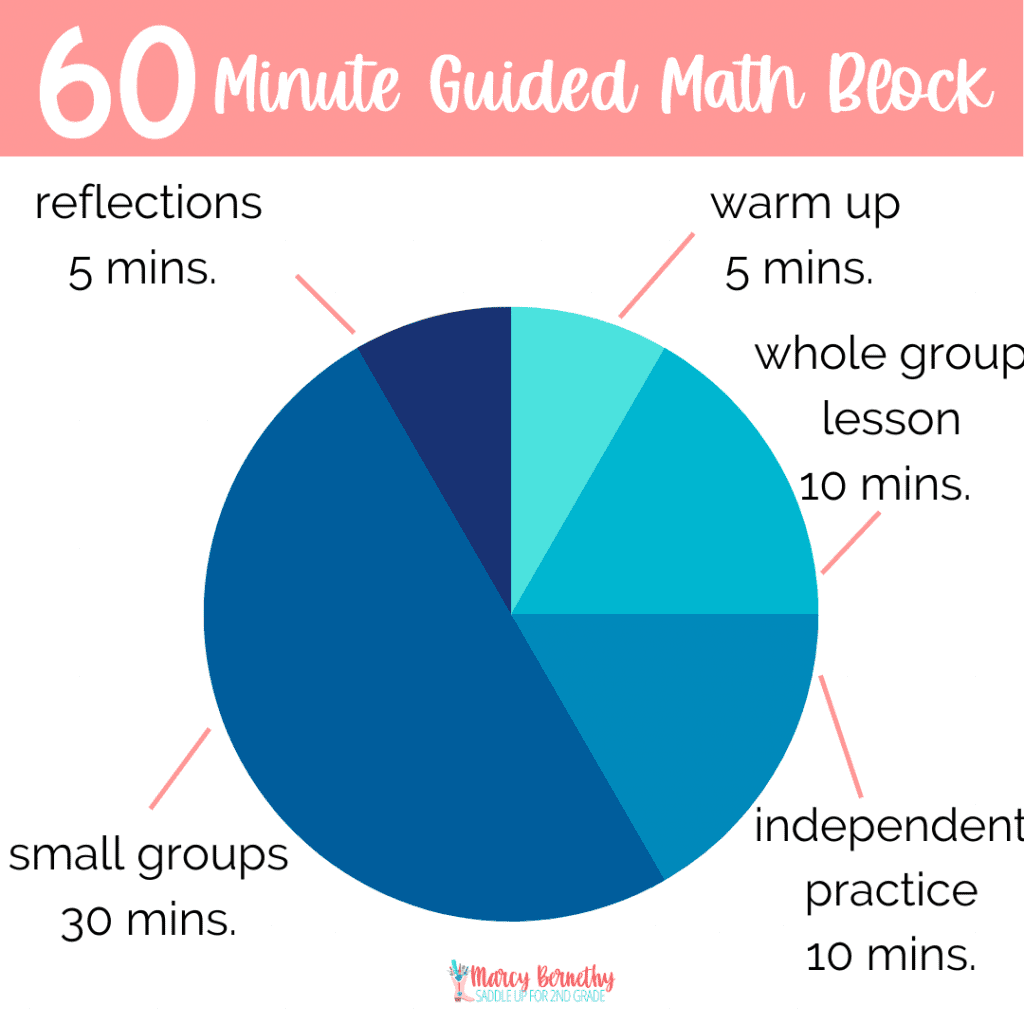
Research shows that 90 minutes is the ideal length of time for a guided math block schedule. There are several ways to break up a 90 minute math block.
In this example math lesson
n plan for guided math, you’ll begin your math block with a 5 minute warm up followed by a 25 minute whole group lesson. I recommend doing a 15 minute mini-lesson and 10 minutes of independent practice.
This gives you 45 minutes for small group rotations. You can do (3) 15 minute rotations or (2) 20 minute rotations. Again, small groups are very flexible and can be adapted to meet the needs of all of your students. You can meet with some groups for 20 minutes and others for 10 minutes depending on student needs and the concept being taught.
It’s also important to remember that you can change this up throughout the year! Just because you start the year doing (3) 15 minute rotations doesn’t mean you can’t do 2 rotations at any given time.
Lastly, you’ll end your 90 minute math block with a 5 minute reflection. This gives you an extra 10 minutes for brain breaks.
I like to take the first break between whole group/independent practice and the first small group rotation. The second break works well between the second and third rotations.
By giving students a few minutes to loosen up and be silly, it can recharge their brain for the next part of their math block and help them refocus. GoNoodle is my favorite website for brain breaks. There are a ton of fun dance videos, mindset videos, silly songs, and even educational videos.
Another option for structuring a 90 minute math block schedule is:
The main difference here is that the rotations are 10 minutes each instead of 15 or 20 minutes.
I’ve found that 10 minutes is too short for ME, but I know others who prefer it this way. You can adjust the time to fit what works for you. 15 minutes is the perfect amount of time for me. As your kids build stamina, you can also increase your time.
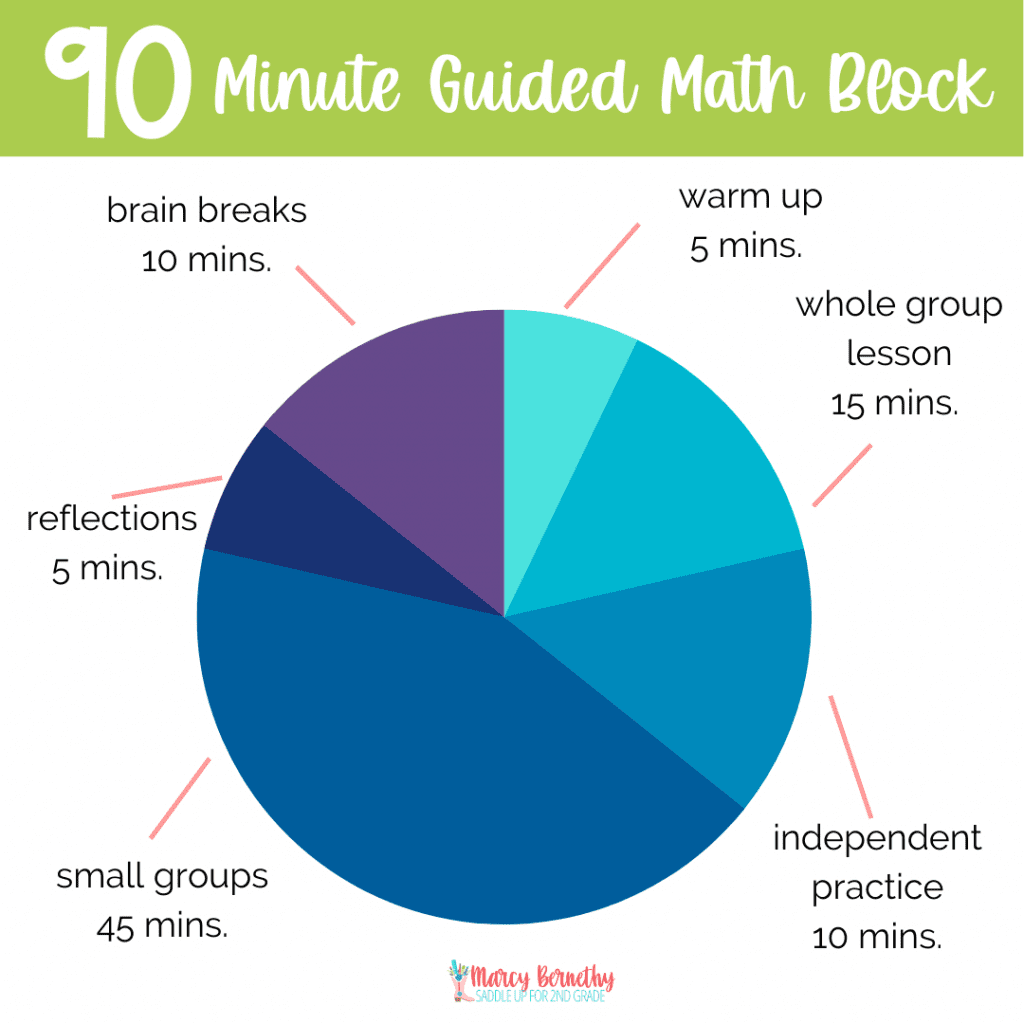
When I taught with a 90 minute math block, I structured my schedule like this:
The first half of the year, I spent 30 minutes for my whole group lesson. The second half of the year, I tried to cut it down to 20 minutes. Some days it worked and other days I needed that extra 10 minutes.
My schedule was set up to where I saw 3 math groups a day for 15 minutes each. I had 5 groups total and I saw each group twice a week.
One last option that I would like to share with you is a technique called power hour. This is when your core teaching is done during the time at your small group teacher table.
A power hour math block schedule consists of the following:
Your mini-lesson consists of a quick introduction or review of the concept. Then, you are practicing those concepts at the small group table.
This power hour, rotated schedule is ideal if you have 60 minutes or less for your math block.
On days 1 and 3, you’ll only do your warm up, whole group lesson, independent practice, and reflection. There will be no small groups on these days.
On days 2 and 4, you’ll teach using power hour. You’ll do your 5-10 minute mini-lesson followed by small groups. You can do (4) 15 minute rotations or (3) 20 minute rotations.
Day 5 is a flex day where you can review, play a math game, assess your students, or do another power hour.
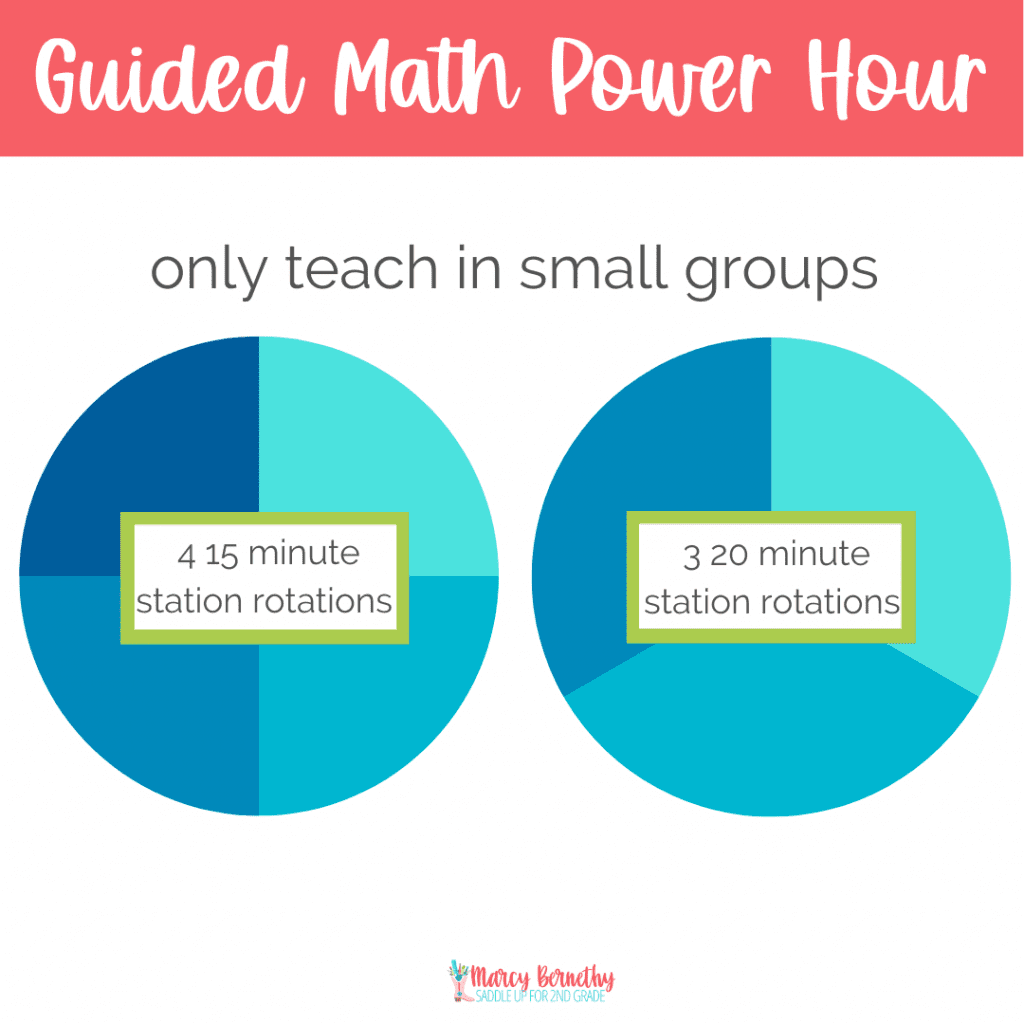
I hope this guided math schedule gave you a few ideas on how to set up your math blocks. You can learn more in my YouTube video below.
In my next post, I’ll be discussing how to establish procedures so that your math block runs smoothly.
In the meantime, if you want to get a jump start, you can grab your copy of my FREE Guided Math E-book! Simply fill out the form below to have it sent straight to your inbox to get started!
Save this post for later by pinning the image below!

Math should be fun, not stressful. Ditch the timed math fact tests and replace them with math games that will help your students learn and retain information more effectively.
© Saddle Up for 2nd Grade • Website by KristenDoyle.co


